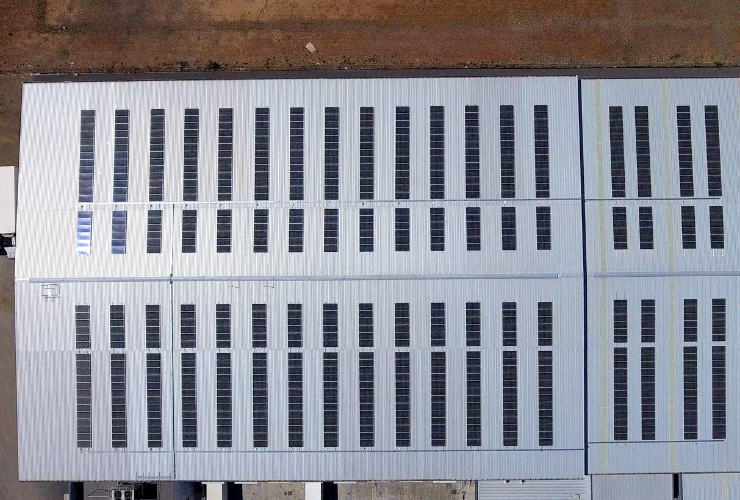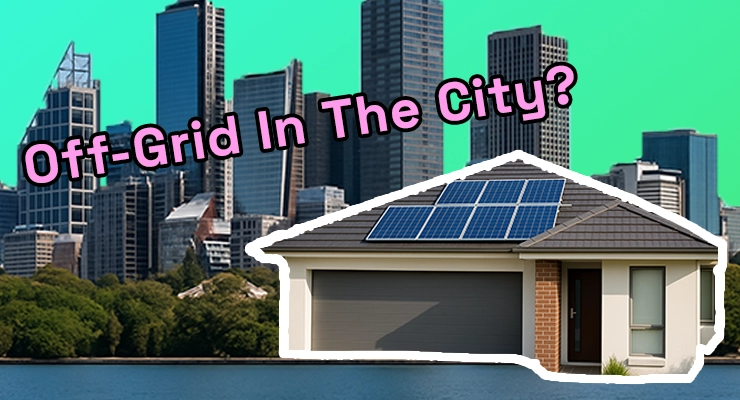Fast read
Australia consumes around 250 terawatt-hours (TWh) of electricity annually. To meet the demand for solar power, we would need approximately 355.8 million solar panels. This estimate is based on average solar panel efficiency and sunlight exposure. Accounting for real-world factors like weather and system losses, this number rises to about 444.8 million panels.
These panels would require around 711.7 square kilometres of land, a tiny fraction of Australia's total area. By integrating other renewable sources and energy storage solutions, solar panels can significantly contribute to powering Australia and reducing carbon emissions.
How Many Solar Panels Are Needed to Power Australia?
Australia is a sun-drenched continent with vast potential for solar energy production. The country is shifting towards using more renewable energy sources. People are curious about the amount of solar power required to fulfil the nation’s electricity demands. To power Australia, approximately 389 million solar panels are needed under ideal conditions.
This estimate could go up because of factors such as shading, weather, and installation problems. It also depends on how much energy is currently being used and how efficient the solar panels are.
This article explains the potential and requirements for solar panels to power Australia.
Understanding Australia’s Energy Consumption
Before delving into the number of solar panels needed, it’s essential to grasp Australia’s current energy consumption. According to the Australian Energy Regulator, the country consumes approximately 250 terawatt-hours (TWh) of electricity annually. This vast amount of energy is used by households, businesses, and industries across the continent.
Solar Panel Efficiency and Output
Solar panels convert sunlight into electricity, and their efficiency plays a crucial role in determining how many are needed. Most modern solar panels have an efficiency rate between 15% and 22%. Higher-efficiency panels generate more electricity from the same amount of sunlight, reducing the number of panels required.
On average, a residential solar panel produces about 250 to 450 watts of power. For simplicity, we’ll consider a standard 400-watt panel for our calculations.
Calculating the Number of Solar Panels
To determine the number of solar panels Australia needs, we need to convert annual electricity consumption to daily consumption. Then, we must calculate the amount of solar power required.
- Annual Energy Consumption: 250 TWh (250,000,000,000 kWh)
- Daily Energy Consumption: 250,000,000,000 kWh / 365 days = ~684,931,507 kWh per day
Now let’s look at how much sunlight Australia gets on average – around 5.5 kilowatt-hours per square meter each day. This figure represents the amount of solar energy received per square meter of land area.
- Daily Solar Output per Panel: A 400-watt panel receiving 5.5 kWh/m²/day would produce approximately 2.200 kWh per day (400 watts * 5.5 hours / 1000).
- Total Panels Needed: 684,931,507 kWh per day / 2.200 kWh per panel = ~311,332,503 panels
Factoring in Real-World Conditions
The above calculation assumes ideal conditions, but several factors can affect the actual number of panels required:
- Geographical Location: Solar panel efficiency varies across regions because of differences in sunlight exposure.
- Weather Conditions: Cloud cover, rain, and seasonal variations impact solar energy production.
- System Losses: Inefficiencies in the solar power system, such as inverter losses, shading, and dust on panels, reduce overall solar panel output.
Considering these factors, a buffer of 20-30% is typically added to account for real-world conditions. Applying a 25% buffer:
- Adjusted Panels Needed: 311,332,503 panels * 1.25 = ~389,165,629 panels
Land and Space Requirements
To figure out how many solar panels Australia needs, we must think about how much land is needed for installation. This is another important factor to take into account.
The size of the land needed will directly impact the feasibility of the solar panel project. Assessing this aspect before moving forward with any plans for solar power in the country is crucial. The average solar panel occupies about 1.6 square meters.
- Total Area Required: 389,165,629 panels * 1.6 m² = ~622,665,006 m²
- Converting to Square Kilometers: 622,665,006 m² / 1,000,000 = ~622.66 km²
Australia has a total land area of about 7.7 million square kilometres. The space needed for solar panels to power the country would only be a small fraction of this total land area.
Integrating Solar with Other Renewable Sources
Australia can be powered solely by solar panels. Including wind, hydro, and geothermal energy can make the energy supply more stable and reliable. Combining these sources can ensure a more consistent and secure energy supply for Australia. Diversifying energy sources helps mitigate the variability in solar power production because of weather and seasonal changes.

The Role of Energy Storage
Energy storage solutions, such as batteries, are crucial for managing the intermittent nature of solar power. By storing excess energy produced during sunny periods, batteries ensure a continuous power supply during cloudy days or nighttime. Developing a robust energy storage infrastructure is essential for maximising the effectiveness of solar panels in powering Australia.
Government Policies and Initiatives
Australia’s government has rolled out a range of policies and initiatives to encourage the use of solar energy. These efforts include subsidies, rebates, and incentives for both residential and commercial solar installations.
Technology is improving and prices are decreasing. This allows more people in Australia to use solar panels. Solar panels can now power homes and businesses.
These government measures aim to make solar energy more accessible to everyone. Subsidies help reduce the upfront cost of solar systems, making it easier for homeowners to invest in renewable energy. Rebates provide financial returns to those who have already installed solar panels, adding to the appeal. Rewards for businesses to use solar power help them save money on energy and reduce their carbon footprint.
Solar panels are getting better at turning sunlight into energy as technology improves, making them more efficient. This means that even in areas with less sunlight, solar power can still be a reliable energy source. Solar panels and installation costs are going down, making them a cheaper choice for Australians.
Conclusion
To power Australia with solar panels, around 389 million panels would be required under ideal conditions. This figure is based on current energy consumption and the efficiency of solar panels.
Accounting for real-world factors such as shading, weather variations, and installation inefficiencies, the adjusted number would likely be higher. Therefore, a more realistic estimate might range from 400 to 450 million panels. This would ensure a consistent energy supply despite the inherent variability in solar power generation.
Solar panels can help meet Australia’s energy needs when used with other renewable sources and energy storage. This calculation shows their potential impact.
Australia is working towards a cleaner future by using more solar panels. This can help reduce carbon emissions and make sure we have enough energy. By harnessing the abundant solar resources available, Australia can set a global example in the transition to renewable energy.



